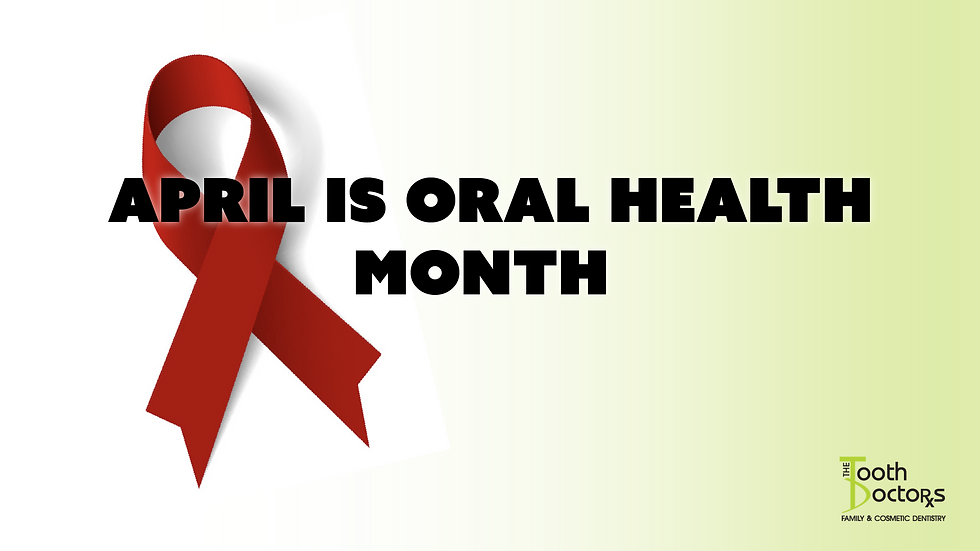Let’s Talk About Gum Disease
- The Tooth Doctors

- Jul 17, 2013
- 2 min read
July 17, 2013 by Jenny
When it comes to understanding oral hygiene, your toothbrush and floss are only the beginning. When talking to most patients, they don’t seem to have a good understanding of what gum disease is. I am going to give you an overview of what the signs and symptoms of gum disease are.

Gum disease, also known as periodontal disease is caused by a build up of plaque, which is constantly forming on our teeth.
Some signs of periodontal disease are bleeding gums, red or swollen gum tissue, recession, bad breath or loose teeth. Many things can contribute to gum disease such as poor oral hygiene, smoking, genetics, medications and medical conditions. Pregnancy may also contribute to gum disease. This is known as pregnancy gingivitis.
Many of you have had a periodontal exam in the office. It usually starts with a series of numbers that do have significant meaning. Hygienists have an instrument that measures in millimeters under the gum tissue (pockets). We generally like to see results between 1-3 millimeters. This would show the gum tissue is healthy and pockets are manageable for patients at home with proper brushing and flossing. When pocket depths reach a measurement of 4 and above we have concerns of unmanageable areas in the oral cavity. Deeper pockets usually have other signs of gum disease such as bleeding and/or red, swollen gum tissue.
A periodontal exam will also consist of marking bleeding spots, which are areas around the teeth that bleed upon measurement. These areas are noted to compare to future exams. We as dental professionals can determine if the gum tissue is getting healthier by these measurements and a reduction in bleeding areas.
The last thing that we like to measure are areas of recession. Gum recession is the process in which the margin of the gum tissue surrounding the tooth wears away or pulls back, exposing more of the tooth or the tooth’s root. Receding gums may be one of the first signs of gum disease. This can occur due to aggressive tooth brushing. Make sure to always brush your teeth with a soft or ultra soft tooth brush to help avoid unnecessary gingival recession.
It is possible to have gum disease and have no warning signs. That is one reason why regular dental checkups and periodontal examinations are very important. Treatment methods depend upon the type of disease and how far the condition has progressed. Good dental care at home is also essential to help keep periodontal disease from becoming more serious or recurring. Let’s Talk About Gum Disease



Comments